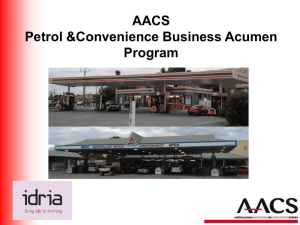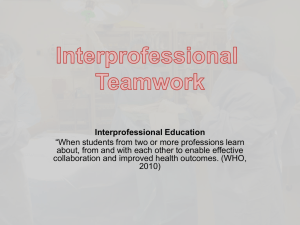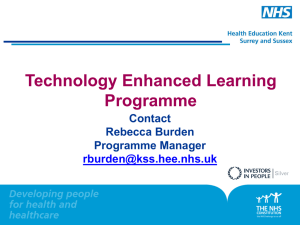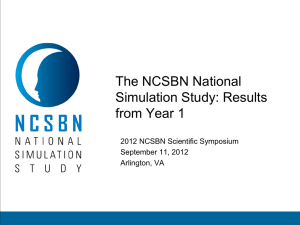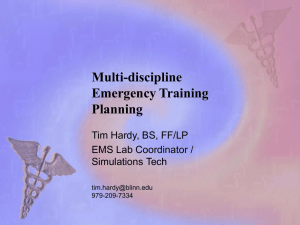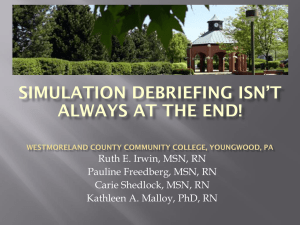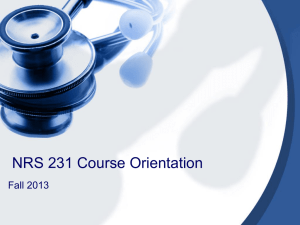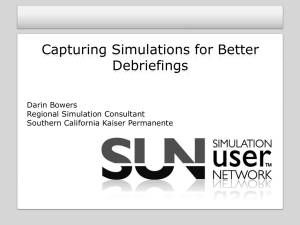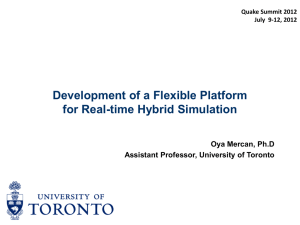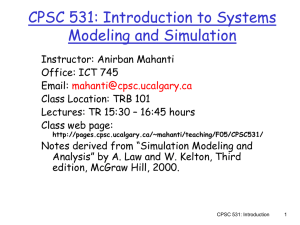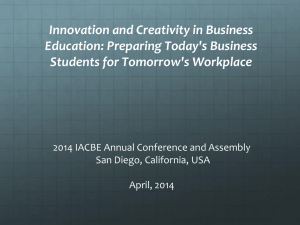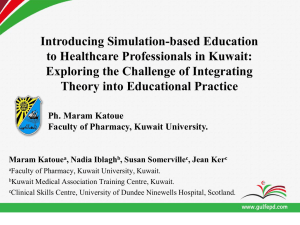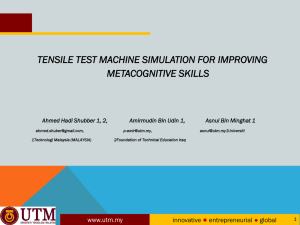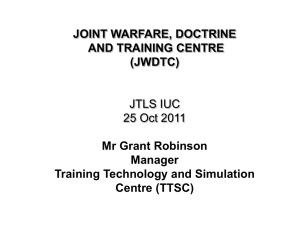Why Simulation?
advertisement
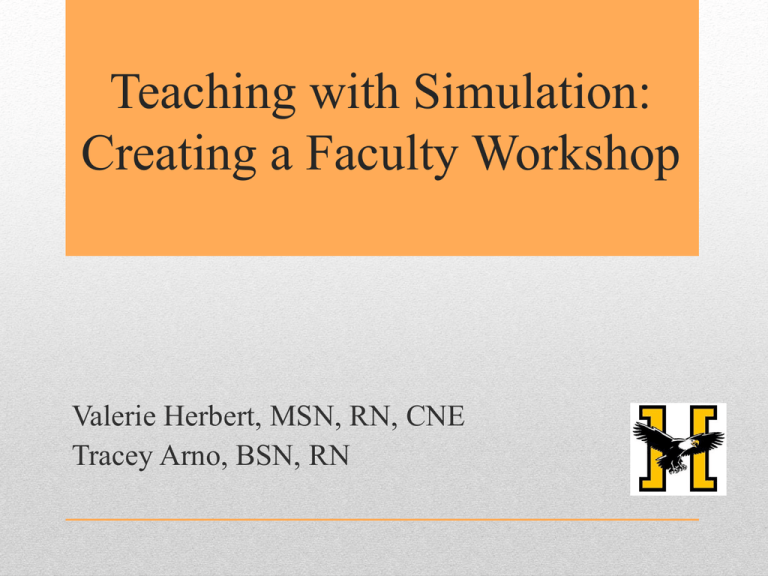
Teaching with Simulation: Creating a Faculty Workshop Valerie Herbert, MSN, RN, CNE Tracey Arno, BSN, RN Healthcare Simulation? 1. Attempt to mimic a clinical situation 2. Goal of understanding and managing situations in actual clinical practice 3. Technique that represents a real event 4. Facilitates Problem Based Learning (PBL) Why Simulation? • Changes in Healthcare Environment • Focus on Patient Safety and Quality • Bridge from Static Lab to Clinical • High Stakes—Low Exposure • Platform for all students same experience Faculty Development • Faculty Development—mostly on the fly • Mentoring by Peers • Attending National Conferences • Identified as a major Barrier for Effect Simulation Implementation Should Simulation Replace Clinical? 1. Yes 2. No Percentage of Clinical Replacement with Simulation? 1. None 2. 10% 3. 25% 4. 50% 5. 75% NCSBN 2010 SURVEY • 1060/1729 for 62% response rate • 83% thought we should be using more simulation • 76% reported more faculty need to be trained to facilitate simulation • 30% of clinical time could be substituted with simulation • 69% report not enough staff to run simulation controls and oversee students Does Simulation Count as Time in Clinical? NCSBN Survey No, simulation is a supplement to clinical Yes, simulation is used as a substitute for clinical Yes, simulation has been used as a substitute on occasion Overall 29% 46% 18% Associate 29% 47% 17% Baccalaureate 27% 48% 18% Diploma 21% 53% 21% Prelicensure MSN 16% 51% 22% State Board of Nursing • Phase II Study by NCSBN National, multi-site study in prelicensure nursing programs 5 ADN and 5 BSN 3 Groups 10% Clinical Replacement 25% Clinical Replacement 50% Clinical Replacement • Phase III: Follow up of new graduates into first year of practice Simulation Developments…. Today and Future NCSBN Study Standards of Best Practice High Stakes Assessment Medical Simulation Workshop • Faculty from 4 Nursing Programs • Immersive 2-Day educational program • Best practice standards, simulation framework, and current evidence • Focused on knowledge, skills, and abilities in simulation teaching strategies Program Agenda: Day 1 • Introduction to Simulation—Teaching Strategy • Buttonology • Debriefing • Designing Individual Simulation Case • Troubleshooting the Equipment Program Agenda: Day 2 • Simulation Case Development • Assessment and Evaluation Strategies • Moulage • Networking & Support • Curriculum Integration • Future Trends for Nursing Education Workshop Evaluation Following participation of the 2-Day course, I can: 1 2 Strongly Disagre e 1. 2. 3. 4. 5. 6. 7. 8. 9. 3 4 5 6 Neutral Describe clinical simulation in nursing education, and the theoretical framework for simulation design. Identify current best practices in simulation teaching strategies. Determine simulation approaches based on student learning objectives and course outcomes. Understand basic operation of mid- and high-fidelity manikins. Develop a basic simulation experience. Demonstrate different moulage applications for simulation. Plan a debriefing approach. Assess at least one type of student outcome from simulation. Understand future trends and implication in clinical simulation. 1. Overall how satisfied are you with the simulation as a learning experience? 2. What was the best or most useful part of the simulation course? Least? 3. What parts of the simulation course would you change/expand? 4. Are you interested in further simulation educational activities? If so, which areas? 7 Strongly Agree N/ A Questions?

